Dressed For Virtual Success
Blurring the Lines Between Fact and Fantasy
February 1, 2024
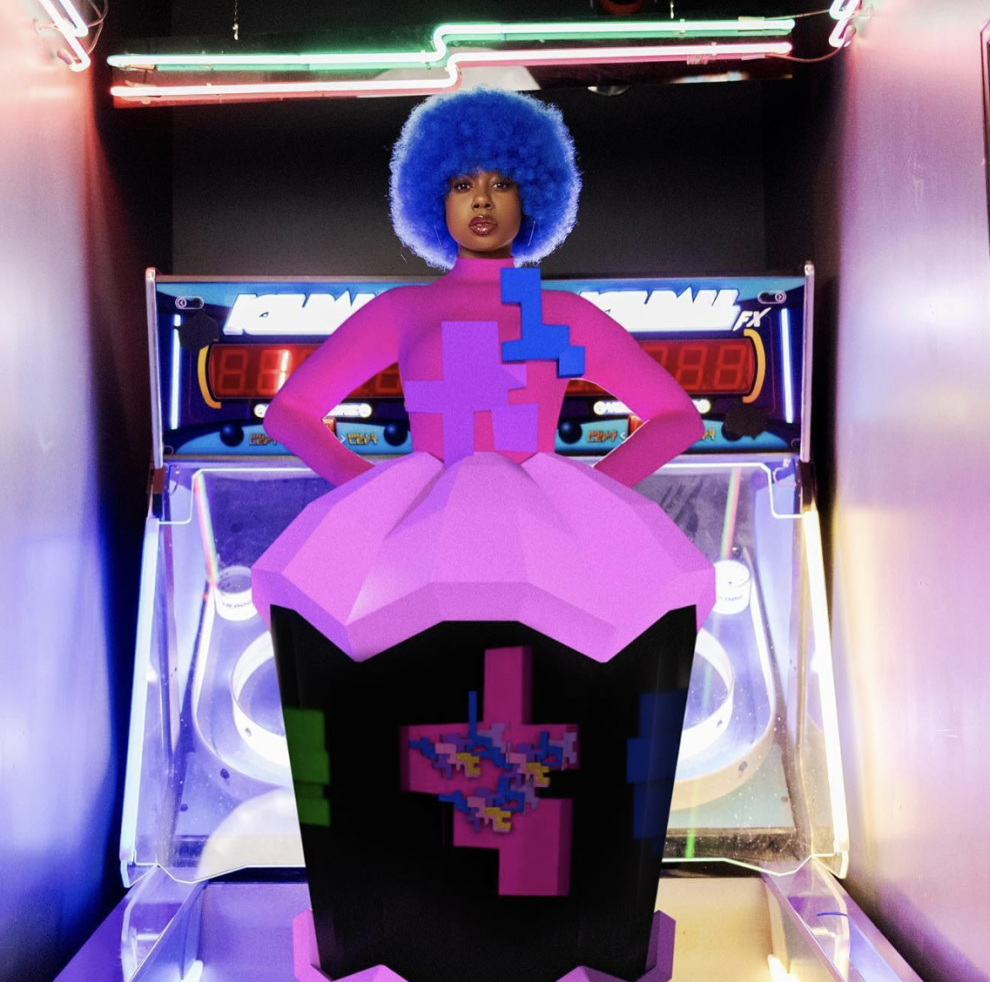
Dressx customer @keiabeia wearing the digital drop by metaverse artist @awacazo
by Aria Novosedlik
A year ago, a company called DressX crossed my radar after appearing in a video by one of YouTube’s bigger creators, Safiya Nygard. She’s got a quirky, fashion-oriented channel with 10 million followers, and her review of this company had me mildly intrigued, if not slightly puzzled.
I’d never heard of digital fashion that you pay for outside of the gaming world, which has managed to monetize everything else. Fast forward to a few months ago, and even more medium to large creators like Danny Gonzalez and HopeScope have begun reviewing DressX, which had me wondering: could digital fashion—that is, virtual clothing created purely to exist in the digital realm—really take off?
It also led me to the realization that I’m now old. Who in their right mind would buy clothing that only exists online? In the design world, form follows function. What happens when you strip something as essential as clothing of its primary function? Then again, some things exist for the express purpose of being visually appealing. But can digital fashion accomplish that? DressX certainly thinks so. Safiya’s review was pretty straightforward: ‘I think they’re doing a good job at sourcing digital clothes that are just straight-up cool and desirable’.
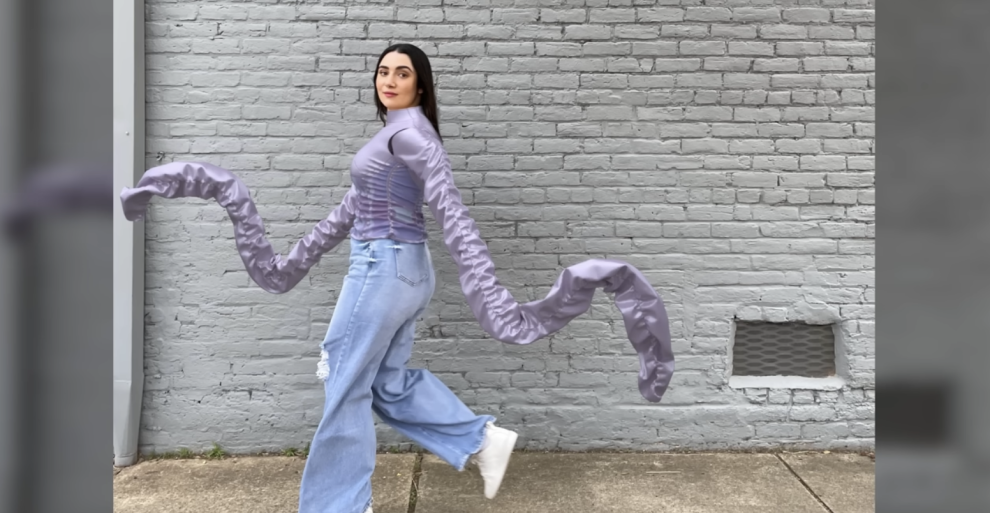
Influencer Safiya Nygard demonstrates how to wear black, keep it tight, start trying on the virtual outfits and turn your 2D images into 3D avatars. Check out the video here for a fulsome demo.
As the largest digital fashion company out there (yes, there are more), DressX has developed a very complicated algorithm that uses 2D photos of their customers to create 3D avatars out of them. This is a very impressive level of tech ingenuity that has countless applications. Based out of Ukraine, DressX’s Natalia Modenova claims that ‘by substituting just 1% of physical clothing with digital garments, we will eliminate the annual carbon footprint of the fashion industry by 35 million tons, which is equal to the total carbon emission of Denmark in 2017.’ She also notes that ‘this will save 5 trillion litres of water’ by allowing people to try on clothes and receive images of themselves in outfits they’ve purchased, which can then be uploaded to social media.
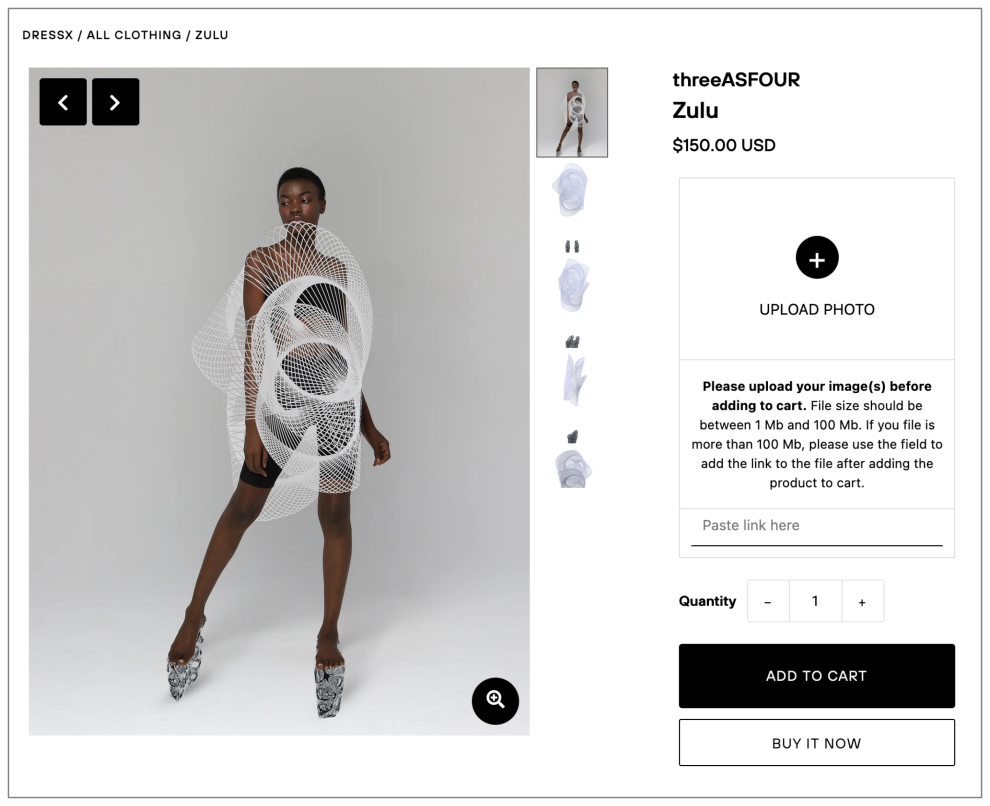
It’s quite clear that influencers are one of the primary targets, considering how much pressure they face to churn out exponential amounts of content on multiple platforms. That said, the human eye is extraordinarily precise, and DressX doesn’t quite hit the mark. When you purchase an outfit from them, you are instructed to send in a photo of yourself wearing minimal black clothing. This is so that they can have the best reference for what your physical dimensions are; they require accurate data in order to create the most realistic avatars for clients as possible. And while they’ve done an excellent job at this, they’ve fallen short with regards to rendering accurate, realistic lighting.
DressX also has an app that allows you to turn your phone camera on so that you can try on their outfits in real time before purchasing them. Of course, this aspect of their tech is very exciting as it could easily be introduced to tangible clothing sites and allow people to try on clothing remotely before ordering products online. In fact, during a recent fashion tech summit focussed on sustainability, DressX collaborated with Roblox and revealed that 43% of the 1,500 14-26 year olds that they surveyed were keen on ‘twinning’ — where they can own an outfit both digitally on their avatars in Roblox, as well as physically in the real world. So while the metaverse certainly didn’t take off when everyone predicted it would, it’s still relevant for younger generations.
In fact, now that Apple is anticipated to kick AR technology up several notches with its own hardware and software, the metaverse might just be granted another chance to really take off. That possibility—along with Gen-Z’s desire to carefully curate their digital image—could signify that there’s a strong future for digital fashion.

These fab virtual shades are yours for just under USD $1500. Yup, we said virtual, not actual.
The Fabricant, a major competitor of DressX, has managed to up the ante in this fledgling category. It should be noted that unlike DressX, TF does not take a real photo or video of you and apply digital clothing to it. What you’re buying is clothing for your metaverse avatar. They’ve partnered with some of the fashion world’s heavyweights like Vogue, Puma, H&M, and even Atari. Collections include World of Women, Highsnobeity, Sony Music, and so on. World of Women touts itself as ‘the first digital fashion collection designed for an NFT project. 27 garments co-created by a global community. Wearing utility in Decentraland and Ready Player Me.’ The Sony Music collection’s description reads: ‘The Fabricant x Pabllo Vittar x Nicopanda. A collaboration with a drag superstar, and a legendary fashion director, celebrating the cultural heritage and natural richness of Brazil and LGBTQIA+ Pride month.’
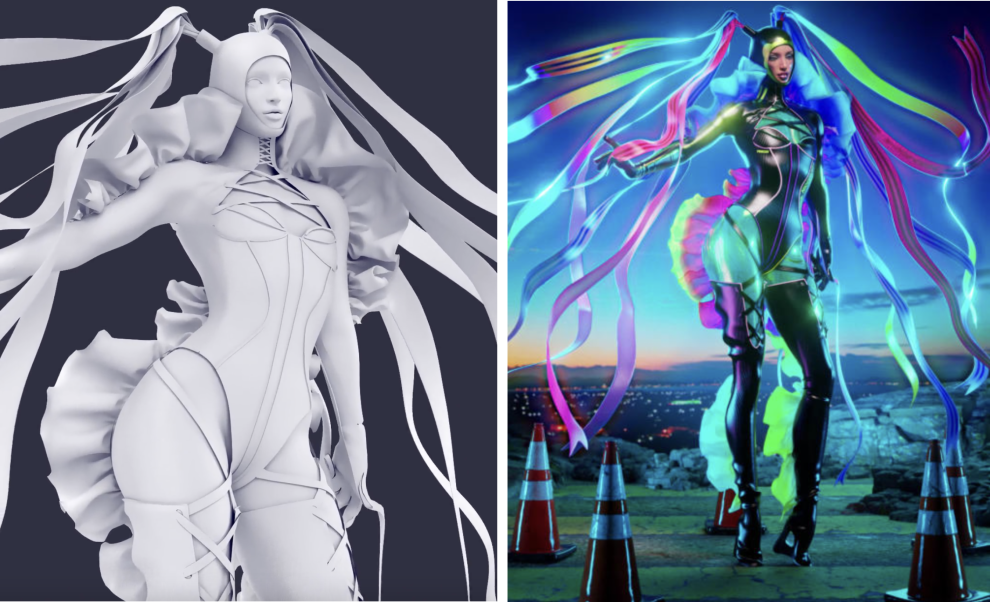
The Fabricant x Pabllo Vittar x Nicopanda: for folks who are still into NFTs. Price tag: USD$750
The Fabricant states that through them, ‘all NFT holders can create, trade and wear digital fashion collections. All holders have exclusive access to co-creation events, private drops, free garments, learning classes and IRL/URL fashion experiences. We are building the wardrobe of the metaverse, growing the decentralized fashion industry together.’ With the goal of dressing 100 million people by 2025, they’ve been much more successful at rendering their items—perhaps because they aren’t merging the real world and digital world—and it wouldn’t be surprising if they surpass DressX due to having a more multifaceted approach to digital fashion.
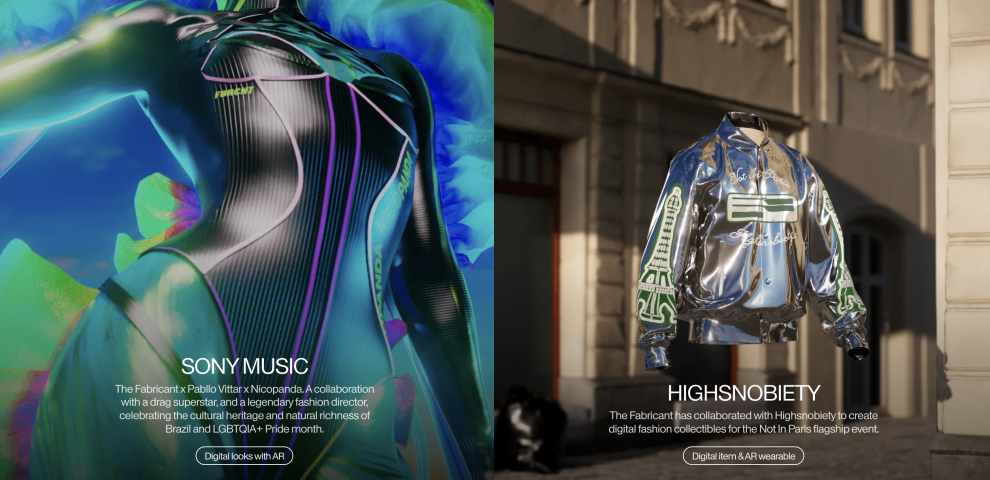
Prices on their platform are also far more varied—you’ve got everything from glowing platform rave boots for 73 cents, all the way to what is described as a historical dutch jacket and trousers from The Fabricant’s ‘infamous DEEP collection’, which costs a mere $7,330. It’s clear that The Fabricant’s goal is very much to foster co-creation and community while maintaining an air of luxury, and they’ve done quite a good job at it. Young and emerging talent will no doubt gravitate towards them as leaders of the industry because after all, the whole ethos behind digital fashion and the metaverse is one of disruption, decentralization, and collaboration.
Several other platforms are popping up every few months and what will be interesting to watch is the ebb and flow of success within the realm of digital fashion, as it’s tied directly to that of the metaverse. And don’t forget about AI, which has rapidly begun transforming these virtual soon-to-be realities. It wouldn’t be the least bit surprising if, in the next decade, we’ll all be able to design digital clothing and print it with our personal 3D printers so we can ‘twin’ and seamlessly move between the metaverse and real life. But for now, a plain white gap tee will suffice while I browse The Fabricant’s PRIMAL RAVE collection in search of the perfect virtual ensemble for decentraland’s next big EDM event.
Aria Novosedlik is a Toronto-based artist, designer and writer.







